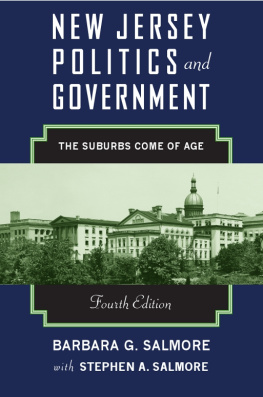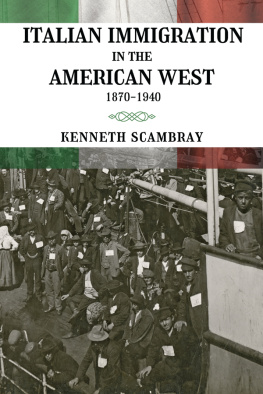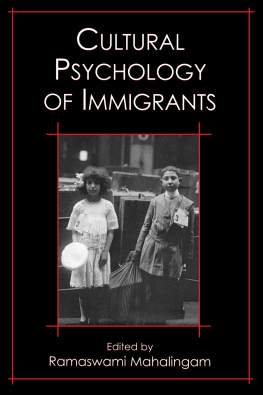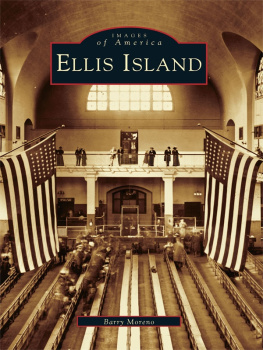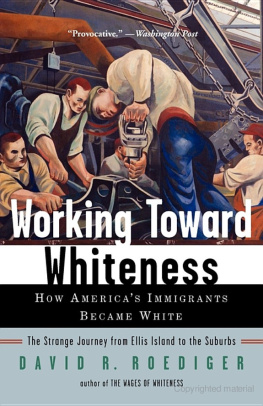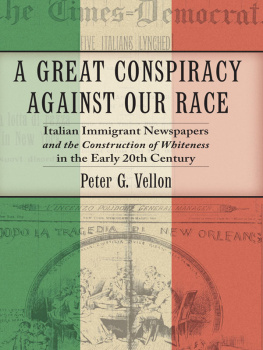978-0-8135-7009-9
978-0-8135-7008-2
978-0-8135-7010-5
978-0-8135-7371-7
Cataloging-in-Publication data is available from the Library of Congress.
A British Cataloging-in-Publication record for this book is available from the British Library.
Copyright 2017 by Robyn Magalit Rodriguez
All rights reserved
No part of this book may be reproduced or utilized in any form or by any means, electronic or mechanical, or by any information storage and retrieval system, without written permission from the publisher. Please contact Rutgers University Press, 106 Somerset Street, New Brunswick, NJ 08901. The only exception to this prohibition is fair use as defined by U.S. copyright law.
The paper used in this publication meets the requirements of the American National Standard for Information SciencesPermanence of Paper for Printed Library Materials, ANSI Z39.481992.
www.rutgersuniversitypress.org
Manufactured in the United States of America
I think of this book as my love letter to New Jersey, particularly immigrant New Jersey. It comes out of my work as an immigrant rights and antiracism scholar-activist and thus from a deep place of identification with and affection for the people I worked with, people who have made the state their home and yet are treated like outsiders. Even though there is much that I am critical about, I came to love a lot about New Jersey in the time that I lived and worked there. I loved its incredible diversity. Although I am an immigration scholar and a native Californian who grew up in what some scholars call a majority-minority ethnoburb like many of the communities I would get to know during my time on the East Coast, my home state simply does not possess the same degree of diversity that New Jersey does. People who identify as black or African American in New Jersey are just as likely to be recent immigrants from Africa or the Caribbean as they are to be people with long roots in the United States. People I thought of as white could be fluent in any number of Western and Eastern European languages and identify more as immigrants than as Americans. Not only could I easily find the cuisines of my childhood hometown of Union City, California (namely Filipino, Mexican, and Vietnamese food), but I also found myself discovering new tastes and cultural traditions I had not yet been exposed to. I got to know Coptic Egyptians and Russian Jews, Cypriots and Kenyans, and even a mixed-race Dominican Saudi Arabian.
Many of its residents are quite self-congratulatory about the diversity of the town, yet I quickly learned that it is a town divided. A mere two square miles and everyone (unless completely in denial) knows exactly where the white and black (or nonwhite) parts of town are. For the most part, you know that the north side is the better, white area. The south side is okay, as long as you dont go farther than South Sixth Street. The Triangle, along with the blocks from South Seventh and higher, pretty much constitutes the ghetto: black, brown, working class, and immigrant. We lived on South Seventh by choice. I wanted my biracial, Filipino and South African son to live with people he could share a connection with. While one of my sons (white) friends parents (they are immigrants from Russia) refused to let him come over because we lived in the bad part of town (it helped later, of course, when they learned I was a university professor), we loved where we lived. Our neighbors included a second-generation Costa Rican couple, an elderly African American couple with roots in the South, an immigrant family from Sierra Leone, and a mixed family: the wife was Puerto Rican and her husband Jewish. I think most of us lived on South Seventh because we were invested in diversity and we made active efforts to connect with one another despite the fact that the rest of our town lived very different and very separate lives. Maybe its not totally coincidental that one of the most outspoken African American civil rights activists in the towns recent history, Vicky White, lived on our street.
My students told me similar stories about their towns. Although many of them came from a vast array of ethnic and racial backgrounds, they lived highly segregated lives. They knew very little about people whose ethnic or racial background they did not share or even about the towns neighboring the ones where they grew up. Those who lived in communities like the one I grew up in seemed to have far more cloistered existences than my own. Nearly all of my high school friends married or were partnered to people of a different racial/ethnic background. With few exceptions, that did not seem to be the case for the young New Jerseyans I met in my classes.
This book emerged, in part, out of my desire to gain understanding of the dynamics of race and immigration in my newly adopted state so that I could better connect with and teach my students. In order to get insider perspectives, I organized my undergraduate courses around the themes that now organize this book. I gave my students assignments that would help me better understand where they were coming from even as I was trying to get them to apply ideas we discussed in class to their everyday lives. I asked students to get census data on their communities and to research how immigration was being discussed and debated in their towns. In many cases, their work became data for this book. My undergraduates also assisted me in recruiting their friends and family members to participate as respondents for this project. Alongside the research that students in my classes conducted, through Rutgerss Aresty Research Center I recruited undergraduate research assistants who grew up in municipalities where some of the most heated and raucous debates about immigration were taking place (and that are the municipalities of focus in this book). I drew from their local knowledge to gain on-the-ground perspectives about those debates.
More important, this book is motivated by my work as a scholar-activist. In late 2005, I joined the faculty of Rutgers University as an assistant professor in the Department of Sociology. Having worked as an immigrant rights and antiracism activist for many years prior to moving to New Jersey, I was anxious to get involved in social justice work in my new state. I joined the New Jersey Civil Rights Defense Committee (NJCRDC), which works to end the detention of immigrants in New Jerseys county jails. Their campaign at the time was particularly focused on the Passaic County jail. Immigrant detainees wrote numerous letters to the group detailing the horrific conditions they faced. I assisted the NJCRDC in preparing a shadow report that we hoped would be read alongside and against the Department of Homeland Securitys Office of Inspector Generals report on immigrant detainee abuse in New Jerseys county jails, including but not limited to Passaic. Our report put the voices of immigrant detainees front and center. The county sheriff, Jerry Speziale, would later be the subject of federal investigation for abuses meted out to immigrant detainees under his watch. My involvement with the NJCRDC, however, would expose me to immigrant rights issues throughout the state, not just those in detention. Among the issues that intrigued and incited me most was the spate of anti-immigrant local ordinances targeting undocumented Latino immigrants being introduced, both successfully and unsuccessfully, in white communities around the state. These anti-immigrant local ordinances are a key focus of this book. My involvement in the immigrant rights movement in New Jersey offers me a unique lens into the local politics of race and immigration as they play out in the state. I had the opportunity to get a close-up view of the ways immigrants as well as immigrant rights activists define and redefine belonging in the face of forces exclusion. Ive tried to do my best to do justice to the people whose lives I discuss in this book, and Ive tried to write this book in a manner that is accessible to them as well as to my past, present, and future students.




